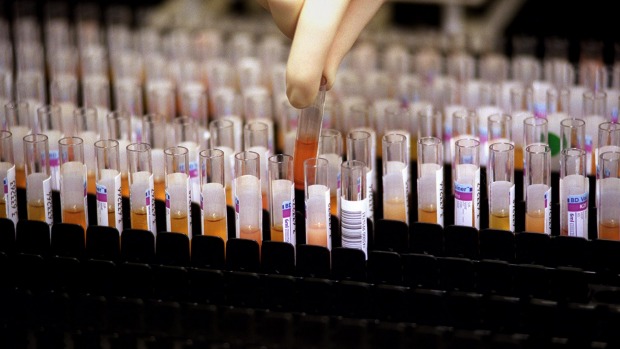
HIV infection rate rising: Fears one in seven people carry the virus. Photo: Supplied
HIV diagnoses have reached a 20-year high in Australia and there are fears one in seven people with the virus do not know they have it, putting more people at risk.
Public health experts are calling for a renewed focus on HIV testing and treatment after new data showed 1235 people were diagnosed with the blood-borne virus in Australia last year - a 70 per cent increase on the number documented in 1999 when diagnoses were at their lowest.
The Annual HIV Surveillance report produced by the University of NSW’s Kirby Institute said unprotected sex between men continued to be the main driver, causing about 70 per cent of new diagnoses between 2009 and 2013. About 25 per cent of transmissions were through heterosexual sex and 2 per cent were through injecting drug use.
Of 313 diagnoses believed to be caused by heterosexual sex last year, about half of the people involved were from countries where HIV is more prevalent. On average, about one child each year for the last decade has been born with HIV in Australia, having acquired it from their mother.
One of the authors of the report Associate Professor David Wilson said while there was about 26,800 people living with HIV in Australia now, about one in seven do not know they have the virus because they have not been tested. Furthermore, he said about 30 per cent of people were being diagnosed well after the optimal time to start treatment.
‘‘In some cases, people are living for several years without knowing they are HIV-positive. This is a double concern: for their own health and that they could be passing the virus on to others,’’ he said.
‘‘If people wait a long time before getting diagnosed, or if they do not start treatment once diagnosed, it is not as easy to recover.’’
The Annual Report of Trends in Behaviour, produced by the UNSW’s Centre for Social Research in Health, also found that rates of annual HIV testing among gay men under 25 had been falling in recent years. This coincided with increasing rates of unprotected casual sex between men. More than 35 per cent of men with casual partners in the six months prior to the survey reported the practice, with rates close to 60 per cent among HIV-positive men with casual partners.
However, in good news, the surveillance report said about 60 per cent of HIV-positive people in Australia were on treatment that restores their immune system and reduces their risk of spreading the virus. In the US, only about 25 per cent of people are on suppressive therapy.
Earlier this year, a study of 282 gay men on treatment with undetectable levels of the virus in their blood found that none transmitted it to their partners through unprotected sex over one year.
The reports were released as part of the Kirby Symposium – a satellite event of the 20th International AIDS Conference in Melbourne, which starts on Sunday. They also follow a recent federal government decision to lift restrictions on the sale of home-testing kits for HIV to encourage early diagnosis of the virus.
Mitchell Payne, a 24-year-old dancer from Melbourne who was diagnosed with HIV last year, urged people to get tested regularly even if they don’t think they are at risk. The youngest board member of Living Positive Victoria said although he was shocked and distressed by his diagnosis, he was grateful to discover it early so he could manage his own health and protect others.
Mr Payne said while some people might be too scared to take a test because of stigma and discrimination towards people with HIV, one year on, he has an undetectable viral load and feels the fittest he ever has. He has also been overwhelmed by the kindness and support people have shown him.
‘‘Instead of the virus ruling my life, I choose to take action against it and get involved within the community. I hope that by standing up and speaking out about my HIV, I will empower other young people to be actively involved in the response to HIV and AIDS,’’ he said.
















88 comments so far
More comments
New user? Sign up
Make a comment
You are logged in as [Logout]
All information entered below may be published.
Thank you
Your comment has been submitted for approval.
Comments are moderated and are generally published if they are on-topic and not abusive.